 | The Sky Dome Appearance Project |
| Please note that these are the pages of the previous sky dome research effort at CGG. Our 2021 sky model can be found on its own publication page. |
|---|
| On this page, we present research results from the research project on sky dome appearance that is currently being conducted by the Computer Graphics Group of Charles University in Prague. The results are presented in reverse chronological order, so that our SIGGRAPH 2012 paper that started it all is now on the bottom of the page. For all the results shown on this page, we provide a single sample implementation of the resulting sky dome and solar radiance functions that is continuously being expanded. This sample implementation was used to render all the images on this page. The sample codebase is being expanded as new results are being obtained, so check this page from time to time to see whether there are any updates! |
Source Code Download
|
||||
| SCCG Conference, May, 2013 | |||
Predicting Sky Dome Appearance on Earth-like Extrasolar Worlds | |||
| Alexander Wilkie | Lukas Hosek | ||
| Charles University in Prague | |||
Starting with version 1.3 of the model, it can be used to give an impression of what outdoor scenes on earth-like exoplanets with a similar atmospheric structure could look like. On this very specific type of exoplanet, humans could reasonably be expected to survive without a space suit, and life-forms very similar to those found on Earth could theoretically evolve. For obvious reasons of practicality during production (outdoor scenes can be simply filmed in suitably scenic outdoor locations here on Earth), such scenarios also feature disproportionately in science fiction movies of all sorts. While it is of course not a hard science question in the narrow sense of the word to investigate what such scenes should look like if they were real, it is nevertheless an interesting side-product of our physically plausible skylight model that a fairly plausible rendering of such scenes can actually be provided.
If the properties of an exoplanet are restricted to it closely resembling Earth, the remaining free parameter are the sun(s) which the exoplanet orbits. This knowledge allows for an appropriate re-scaling of the existing terrestrial model (details are given in the paper). In the course of our case study, we found that even for fairly different star types, the overall appearance of the sky does not change as much as one might assume at first. Also, even the skies of Earth-like worlds that orbit binary stars would have a fairly normal appearance, although specific oddities can be observed. Images of this can be found in the pre-print PDF, which is linked below.
The following sample images illustrate how different parent star colours alter the appearance of an outdoor scene:
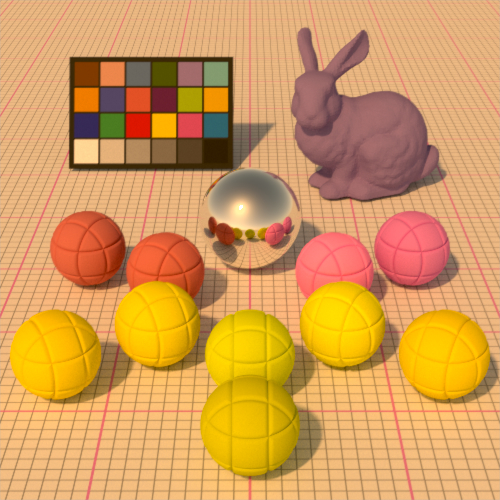

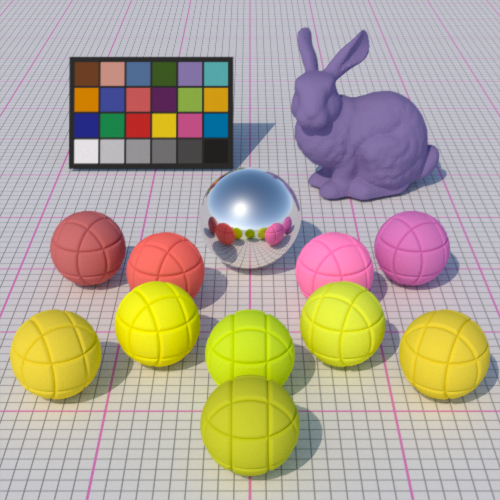
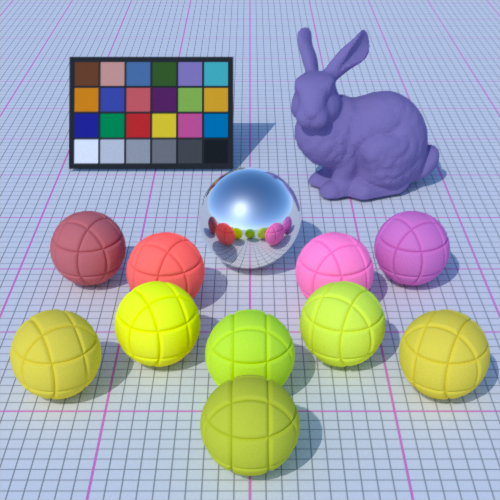
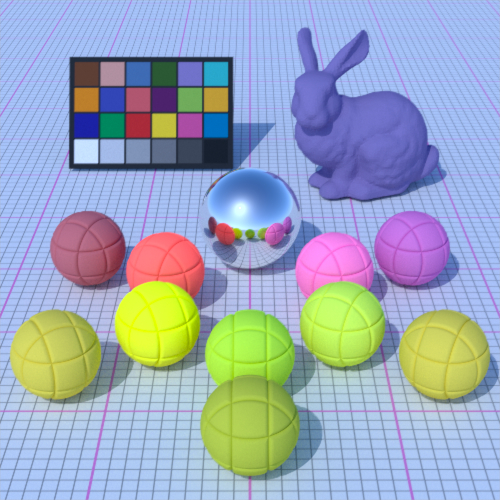

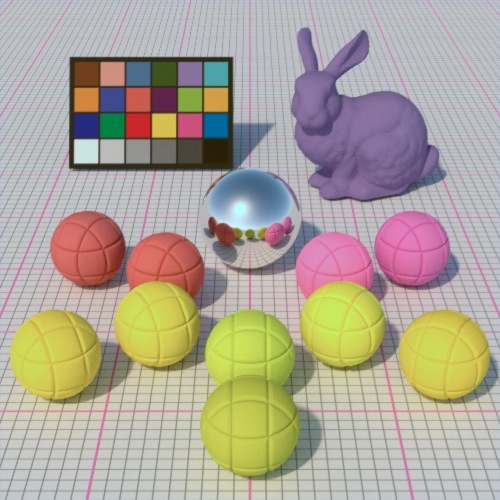
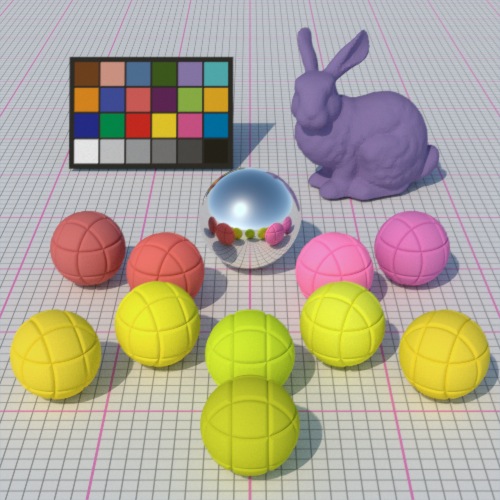

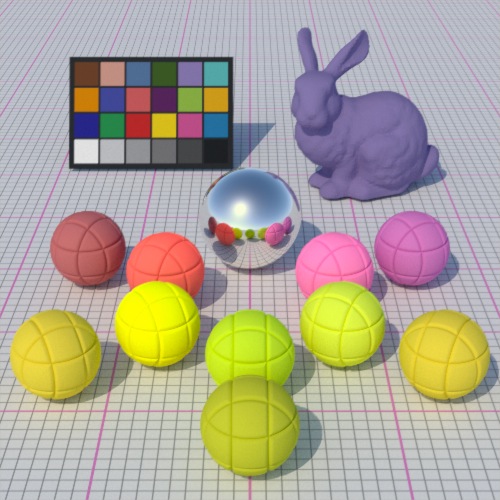

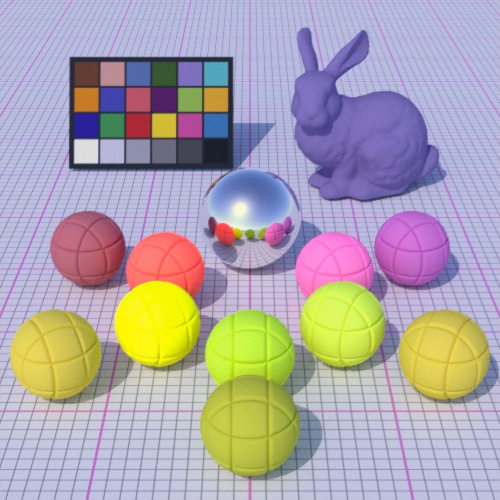
The above images show a scene with solar elevation 48 degrees, turbidity 3, and a parent star with, from left to right, 3k, 4k, 5k, 6.5k, 8k and 10k surface temperature (i.e. a sequence from red via orange, white to blue-white). On the top row of images, no white balance was performed, while the bottom row has white balance applied to it. In the top row, note how the overall hue of the scene shifts from reddish to blue, while the sequence looks remarkably similar once white balance has been performed. Also note how the fluorescent surfaces react to the significantly increased UV radiation in the rightmost images - in this particular scene, this feature is the most significant visual difference, once the eye has adapted to the illumination colour.
Materials for Download
| Pre-print article PDF (high quality figures, 7.2MB) | |||
| BibTeX entry | |||
| IEEE Computer Graphics & Applications, May/June edition, 2013 | |||
Adding a Solar Radiance Function to the Hosek Skylight Model | |||
| Lukas Hosek | Alexander Wilkie | ||
| Charles University in Prague | |||
Starting with version 1.2 of the model, released on December 18th, we now also provide a solar radiance function that matches the conditions found in the sky dome model. Which means that for each turbidity setting and solar elevation, proper solar radiance values across the solar disc are returned. How this solar radiance model was derived is described in the upcoming paper, a pre-print of which will be made available once the editorial process is over. Until the actual paper becomes available, we provide some sample images on this page, as motivation why such a function is valuable. The source we provide of course already contains the functionality.
The following sequence shows, in clockwise order starting from the top left, a sunrise at turbidity 3 for solar elevations of 1, 2, 3, 6, 9, 12, 18, 24, 32 and 42 degrees solar elevation. Note the changes in both solar intensity as well as colour - the reddish colours of sunset/sunrise are plausibly captured by the new model:

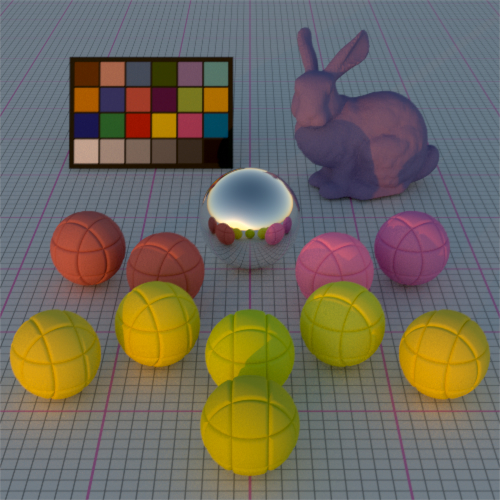
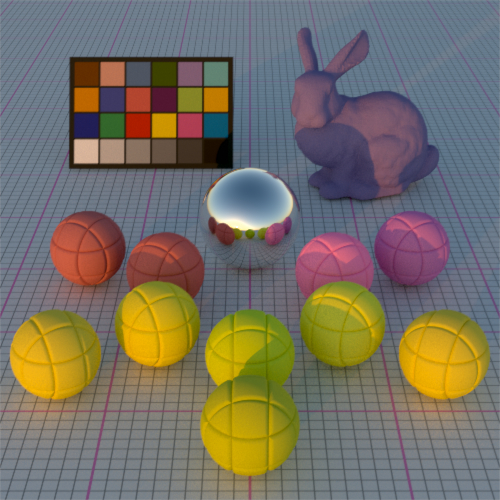
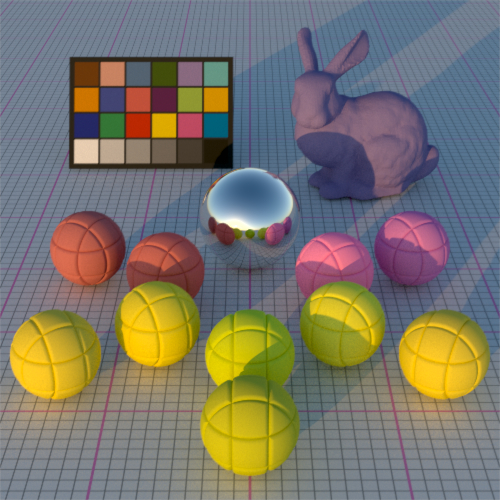
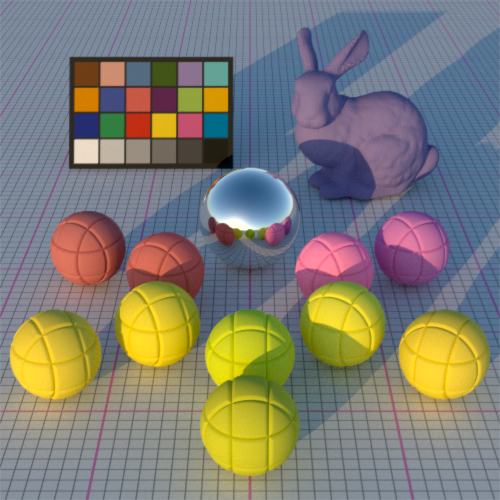

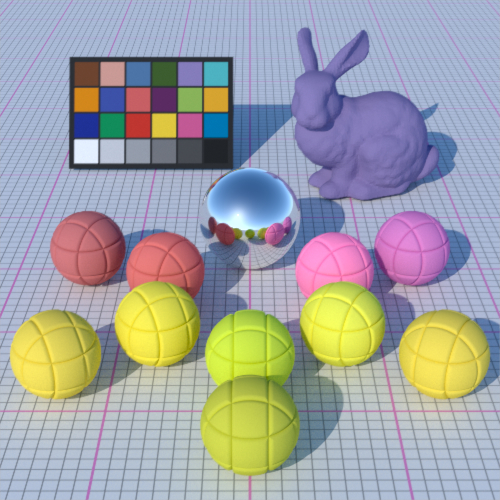
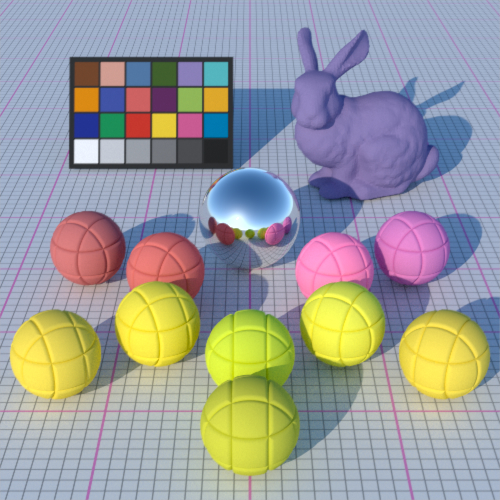


In order to allow for proper assessment of sunlight colour, no white balance was performed on these images.
Our solar radiance function is comprehensive insofar as it does not just provide solar radiance values that can be used for illumination purposes as in the above images, but even allows direct observation of the solar disc. The following images show direct views of the solar disc provided by our model for (from left to right) turbidity 1 at elevations of 42 and 0.5 degrees, turbidity 6 at 0.5 degree elevation, and turbidity 7 at 0.25 degrees elevation - i.e. exactly when the sun is touching the horizon:
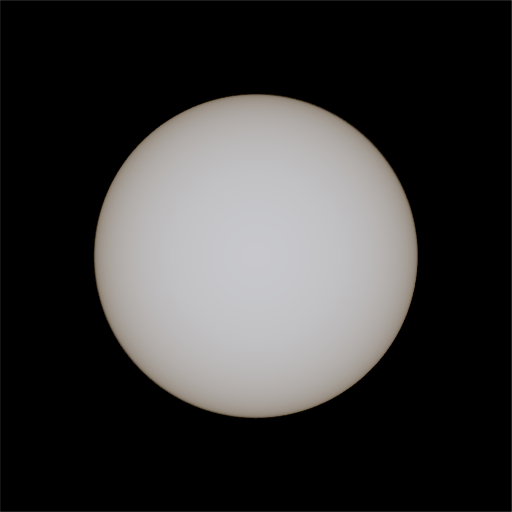


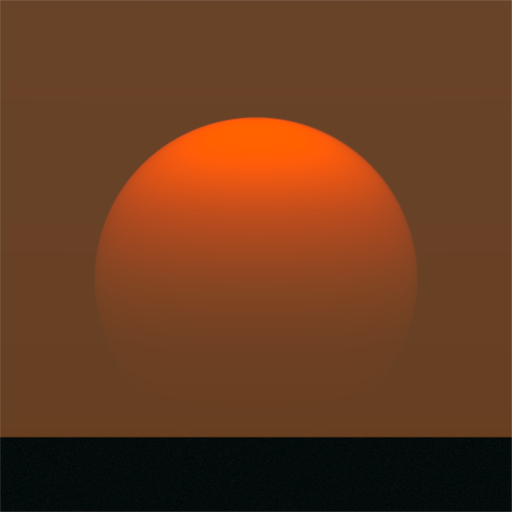
The white solar disc in the leftmost image is not an anomaly: at higher elevations, the sun is practically not attenuated, and has an approximate colour of D65, which is the white point of most imagery. Note that our model includes a good approximation of the effect known as limb darkening, which is responsible for the solar disc not being perfectly uniform in appearance even at high solar elevations.
| ACM TOG 31(4) - Proceedings of ACM SIGGRAPH 2012 | |||
An Analytic Model for Full Spectral Sky-Dome Radiance | |||
| Lukas Hosek | Alexander Wilkie | ||
| Charles University in Prague | |||

Abstract
We present a physically-based analytical model of the daytime sky. Based on the results of a first-principles brute force simulation of radiative transfer in the atmosphere, we use the same general approach of fitting basis function coefficients to radiance data as the Perez and Preetham models do. However, we make several modifications to this process, which together significantly improve the rendition of sunsets and high atmospheric turbidity setups - known weak points of the Preetham model. Additionally, our model accounts for ground albedo, and handles each spectral component independently. The latter property makes it easily extensible to the near ultraviolet range of the spectrum, so that the daylight appearance of surfaces that include optical brighteners can be properly predicted. We also provide a colour space version of the model that yields HDR CIE XYZ values. Due to its similar mathematical properties, the new model can be used as a drop-in replacement of the Preetham model.
Materials for Download
| Lukas Hosek and Alexander Wilkie | Last updated on: |